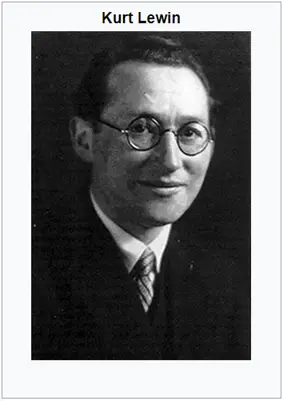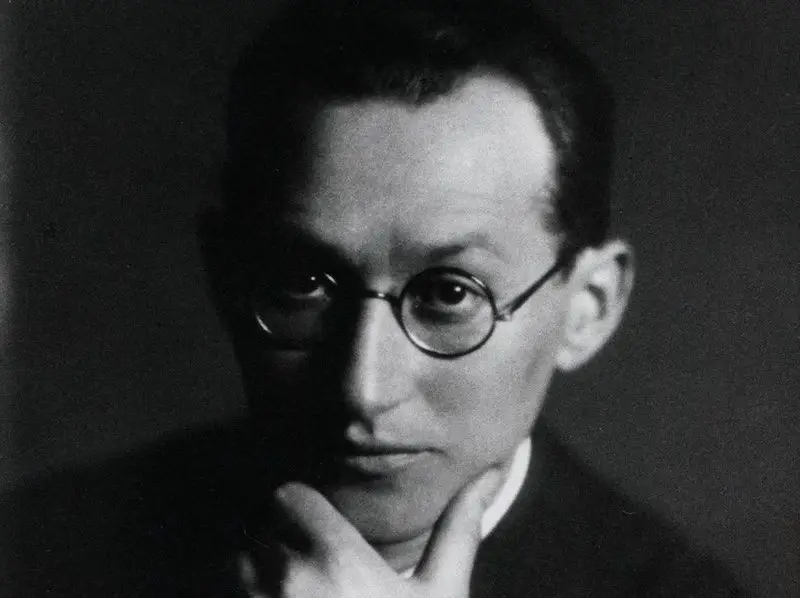Kurt Lewin Leadership Styles
Kurt Lewin Leadership Styles 1939
In 1939, psychologist Kurt Lewin and a team of researchers undertook an experiment to identify different leadership styles. In their study, they identified three distinct types of leadership styles, which included: Authoritarian (Autocratic leadership), Participative (Democratic leadership), and Delegative (Laissez-Faire leadership style).They put these three leadership styles into action with a group of school children charged with the completion of a craft project to determine responses to the leadership styles.
Lewin, Lippit, and Whit’s (1939) study is one of the earliest studies in leadership, and it became very influential and provided a springboard for more defined leadership theories. The style perspective on leadership, Specifically the view proposed by Kurt Lewin in 1939.
Lewin has been referred to by some as the father of modern psychology after the trait leadership perspective fell out of favor. There was the belief that leaders are born, not made, and share common traits. Lewin suggested an alternative approach. Instead of focusing on the traits of leaders, he advised looking at leadership styles.

Lewin, Lippit, and Whit in 1939 identified these three leadership styles,
- Authoritarians Leadership Style
- Democratic Leadership Style
- Laissez-Faire Leadership Style
Kurt Lewin Autocratic Leadership (Authoritarian )
The authoritarian Leadership Style is a very directive one. The autocratic leader has complete authority and control over the group and the decisions being made.
The work is done the same way, with little room for creativity. Group members are not encouraged to provide input.
Most people hold negative views of an autocratic leader, often describing them as bossy or a dictator.
However, there are definitely times when the authoritative leadership style is effective when decisions need to be made quickly in an emergency situation when the leader is the most knowledgeable and experienced person in the group. It’s important to know who was in charge.
It can also be appropriate when the group is languishing and not getting anything done. Sometimes someone has to step in and take charge beyond
💥🎁 New Year & Easter Deals On Amazon !
Don't miss out on the best discounts and top-rated products available right now!
🛒 Shop Now and Save Big Today!*As an Amazon Associate, I earn from qualifying purchases.
When To Use authoritarian Leadership Style
- If you use this style, make it clear that you respect everyone even though you are in charge. If your team members have the expertise, acknowledge it or, at the very least, don’t discount it even if your decision is firm.
- Recognize your team’s accomplishments both as individuals and as a group in public, if possible, refrain from criticizing in public, however.
- Be consistent in how you apply your decisions and interact with people and be reliable and trustworthy. You don’t have to tell your team everything, but what you tell them should be truthful.
- Be very clear as to your expectations. If possible, give the reasoning behind those expectations and what your team can expect in the future.
- Ensure you provide your team with what they need to do the job, such as training, information, and resource. Another way to say this is to be pleasant while being firm unless there’s a good reason not to soften the message.
Kurt Lewin Democratic Leadership ( Participative or Participatory).
Rather than giving directions, the leader participates in the group and encourages others to share their ideas and opinions, even though the leader may have the final say over decisions. Rather than telling the democratic leader guides or facilitates.
In Lewins, original research decisions were made by majority rule rather than by the leader.
The democratic leadership style is effective in producing more ideas, both in quantity and creativeness. Because dissenting opinions are heard, decisions may be more effective.
Like the Children and Lewins original research, people tend to feel better about being members of the group and maybe more committed to the project and the group.
When To Use Democratic Leadership Style
- When you use this style, encourage your group to communicate. You’ll need to monitor the group to ensure that all participants and that no one dominates the discussion.
- If possible, hold your views to yourself until after others have offered theirs. Hold off on evaluating until all ideas have been voiced.
- Treat all ideas with respect, even if you disagree with them.
- Pay attention to the discussion to make sure it doesn’t wander off on the agenda will definitely help in this case.
- Be aware of your verbal and nonverbal communication to make sure you are using provisional language and that your facial expressions show your interest and a desire to understand.
- If you are the final decision maker, know when to move from a participant role to the decision-maker role. When you make your decision, explain the rationale without an apology. If you are a facilitator, was helping the group make the decision, know when to call for that decision, so encourage participation while staying on track.
Kurt Lewin Laisssez Faire Leadership Style
Laisssez faire is French for allowed to do. It’s been called the Do nothing approach.
Kurt Lewin Laissez-faire leaders use a hands-off style, letting the group members make decisions. Another way to look at it is as a delegate of approach.
Some suggest that someone who is a role model can end up being a laissez-faire leader even by doing nothing, or at least not intentionally doing something others will emulate them.
Also, consider how someone’s mere presence can motivate the group. A group tends to be more productive and focused if a manager is on the premises, even if the manager does nothing but observe. It can be highly effective with highly skilled and motivated teams that, when given appropriate direction and resources are at the beginning, can complete the project with minimal involvement by the leader.
The style can also work well of independence is a value of the group.
When To Use Laissez-Faire Leadership Style
- If you plan to use this style, make sure you provide the necessary information, background tools, and resource is in the beginning.
- Ensure that all know of looming deadlines.
- Monitor the group’s progress from a distance so that you can step in if necessary.
- Be flexible. You may need to change leadership styles.
- If you’re going to be a Laisssez-faire leader, the takeaway from this is to make sure the style is warranted and be willing to change processing time.
Which of Lewins three leadership styles do you think is the most effective?
💥🎁 New Year & Easter Deals On Amazon !
Don't miss out on the best discounts and top-rated products available right now!
🛒 Shop Now and Save Big Today!*As an Amazon Associate, I earn from qualifying purchases.
In Lewin and the team’s experiments, they found out that the most effective style was Democratic. Again, excessive use of autocratic styles led to revolution, whilst under a Laissez-faire approach, children were not coherent in their work. They did not put in the energy that they did when being actively led.
Do you think his findings could be generalized to adults?
Lewin believed that we all have a dominant leadership style, the style we prefer to use.
Which of these three styles do you think is your preferred style?
It depends.
As Lewin’s Theory was used to develop other leadership styles theories, most notably Hersey and Blanchard’s situational leadership theory, we can credit Lewin for some of the available management training today.
Kurt Lewin Leadership Styles Advantages and Disadvantages
Kurt Lewin Autocratic Leadership Advantages
In Autocratic leadership, decision-making is fast: because only one person making the decisions and no consultation; thus, decisions can be made very quickly.
In Autocratic leadership, managers experience less stressful for managers. With the leader taking all the responsibility, managers will feel comforted that they are being “looked after” by their ever-present leader.
Kurt Lewin Autocratic Leadership Disadvantages
The obvious drawback that the authoritarian style tends to be less enjoyable from a subordinate’s perspective. The lack of hearing dissenting views may result in poor decisions.
Kurt Lewin Democratic Leadership Advantages
There is a good working environment for the employees because of the conducive environment created by the democratic style, and employees are more likely to enjoy their work.
💥🎁 New Year & Easter Deals On Amazon !
Don't miss out on the best discounts and top-rated products available right now!
🛒 Shop Now and Save Big Today!*As an Amazon Associate, I earn from qualifying purchases.
Because consultation happens before decisions are made, the leader has less chance of a disastrous decision.
Democratic leadership creates an innovative and creative culture because employees are encouraged to have ideas and solve problems on their own initiative.
Kurt Lewin Democratic Leadership Disadvantages
An obvious drawback is that decisions take more time. Meetings can seem endless or numerous, especially if the leader isn’t skilled.
It won’t work if your group members aren’t competent or motivated.
Sometimes you just don’t need everyone’s input or for them to feel good about the situation.
Kurt Lewin Laisssez Faire Leadership Style Advantages
In Laissez-Faire Leadership, there is freedom of direction as employees are involved in the decision-making process. When employees are motivated to drive towards success, a laissez-faire leadership style can provide them with the flexibility they need to succeed (there is no interference from the leader).
Laissez-Faire Leadership style, there is less work for the leader as all responsibilities are delegated to the team, thus less work for the leader.
Kurt Lewin Laisssez Faire Leadership Style Disadvantages
But if the group is neither competent nor motivated, this leadership style can be disastrous. Group members may be dissatisfied with the group’s progress and the leader.
Oftentimes, if a laissez-faire leader is ineffective, someone else with the authoritarian or democratic style will take over, meaning that the Laissez-faire leader is a leader in name only.
Kurt Lewin Leadership Styles 1939
💥🎁 New Year & Easter Deals On Amazon !
Don't miss out on the best discounts and top-rated products available right now!
🛒 Shop Now and Save Big Today!*As an Amazon Associate, I earn from qualifying purchases.




